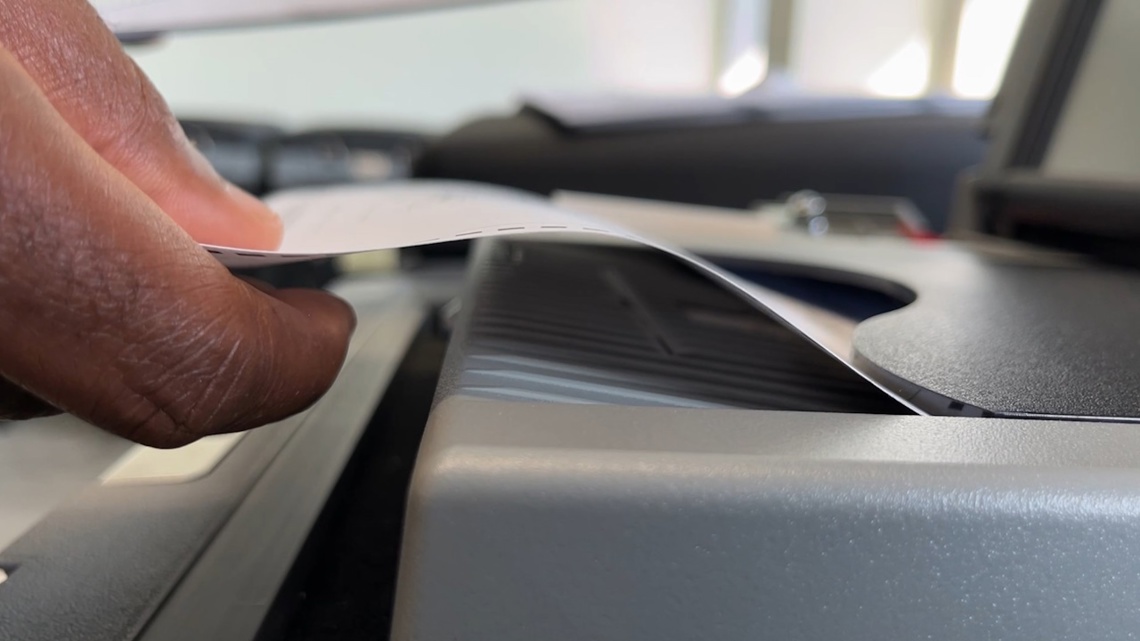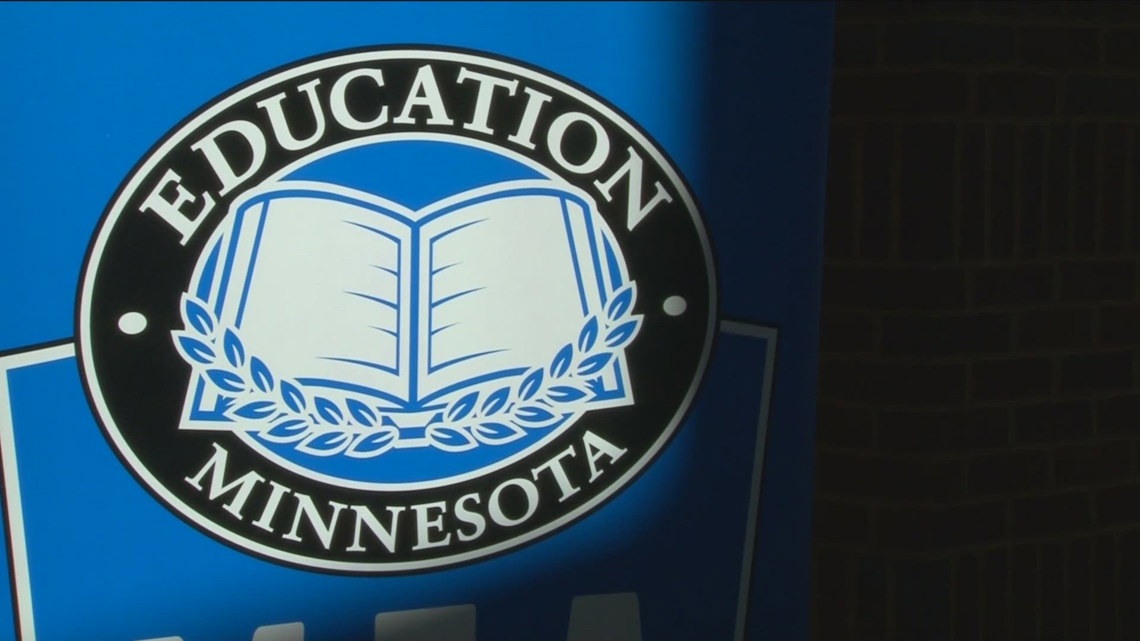Kare11
India lowering tariff on frozen turkey could be a big win for Minnesota turkey farmers


Minnesota’s turkey industry ranks 1st in the nation with more than 600 farms and $1 billion in economic activity.
NORTHFIELD, Minn. — Since 1996, the National Turkey Federation says the Indian government has imposed a 30% tariff on imported frozen turkeys.
“It effectively priced you out of the market,” turkey farmer John Zimmerman says.
Zimmerman owns a 2nd generation turkey farm in Northfield where he raises tens of thousands of turkeys every year. He is also the vice chair of the National Turkey Federation.
“We haven’t had fair access to the Indian market in over 20 years,” Zimmerman says.
Industry leaders say very little turkey has been exported to India over the years, but they’re hoping that will change now that the Indian government has agreed to lower its tariff on frozen turkey to 5%.
Minnesota Senator Amy Klobuchar says the Indian and United States governments have been negotiating lower food tariffs on several products and she fought hard to get turkey included on that list.
“I actually spoke with our United States Trade Representative Katherine Tai. I brought her to the Minnesota State Fair. We talked turkey. I also went to India earlier in the year to make this case,” Klobuchar says.
The final list of foods came out, which included frozen turkey, frozen duck, blueberries and cranberries.
Minnesota will see the greatest impact with turkey.
Minnesota frequently ranks 1st in the nation for turkey production. The Minnesota Turkey Growers Association represents 600 turkey farmers across the state who grow around 40 million turkeys a year.
The Association says it’s hard to predict the impact these lower tariffs will have on the industry, but farmers say having better access to a new market with 1.4 billion people could be huge.
“India is a very large and growing market with a burgeoning middle class. We’re pretty excited,” Zimmerman says.
However, the growth won’t happen overnight. Most of the turkey that is produced in the United States is consumed by Americans.
“About ten percent of the United States turkeys are exported, primarily to Mexico,” Zimmerman explains.
And introducing a new protein to a new country isn’t easy.
“I’m sure they’re aware of turkey and a certain amount of their population has had it, but to make it widespread will take a fair amount of time. There has to be a marketing campaign and the Indian people have to try turkey and hopefully enjoy it.”
Zimmerman says a lot of countries also don’t have the infrastructure and cold storage that’s needed to bring in millions of pounds of product.
It could take a while to build that up, and even cooking the turkey will be a problem.
“Because a lot of foreign countries don’t have an oven like we do in the United States. So, how can they cook a whole bird? Well, they can’t. So, providing products such as ground turkey and turkey breasts, turkey cuts, turkey tenderloins and more ready to cook products will be important.”
Despite these hurdles Zimmerman says he’s still excited about this new opportunity. It might take a few years, but he has high hopes for his farm and hundreds of other farms across the state.
“You know, we don’t know how it will all play out, but just having access to a very large population, a group of people who can access our product is a wonderful opportunity for us.”
Watch all of the latest stories from Breaking The News in our YouTube playlist:
Kare11
Tests underway to ensure accurate ballot count in Minnesota


Elections officials across the state are wrapping up mandatory testing of ballot tabulator machines.
BLAINE, Minn. — The third floor of this town’s city hall is off limits to the public, except when it comes to showing constituents the vote counting equipment is working.
Blaine City Clerk Cathy Sorensen Thursday hosted the public accuracy test for her city’s vote-counting machinery and invited news cameras to come along for the ride.
“The public accuracy test is a great way for anyone from the public to come in and just see for themselves that the machines are working how they are supposed to work,” Sorensen told KARE.
It’s more than just a show-and-tell event. The public accuracy test is part of state law. Every vote tabulating machine in the state has to be tested before each election, and those tests must be open to the public.
Sorensen’s staff had already tested all 32 of their vote scanners before Thursday but re-tested three of them to show the media how the process works. The exercise serves the dual purpose of ensuring accuracy and building public confidence in the integrity of the election system.
Minnesota Secretary of State Steve Simon, who accompanied Sorensen for the accuracy test, said any machine that fails the exam can’t be used on Election Day.
“They try to trick the elections equipment, to make sure it’s up to snuff for Election Day,” Simon explained.
“They’ll do things like put stray marks on it, they’ll crease it or fold it, they’ll overvote or undervote, or do things they’re not supposed to do, all to try to trick the machine to see if it catches it.”
One of the ballots rejected by a tabulator in Blaine’s test had part of its unique location code scribbled over with ink. That code is designed to ensure the ballot came from the correct precinct.
“It’s a way to make sure that somebody doesn’t bring in a ballot, on their own on Election Day from home,” Sorensen explained.
“So, those ballots are printed and those sequence marks are unique for that precinct. It would be very difficult for somebody to know that code. The sample ballots you can print don’t have real codes on them.”
Under normal circumstances, the media can’t get anywhere close to the third floor where the tabulator machines are stored. It takes a special badge to get on the floor, and there’s a series of locks that can’t be opened with a master key.
It’s even tougher to access the secret location where absentee ballots are stored waiting to be counted.
“Even getting into the actual election cage there’s an old school padlock that only election officials have, and again it’s just one more layer to make sure we have that chain of custody and that confidence no one was able to access without one of us,” Sorensen said.
The machines themselves are also protected from online tampering.
“We have a rule in Minnesota; no connection to the Internet during voting hours, 7:00 a.m. to 8:00 p.m,” Simon said.
“We have these public accuracy tests on the front end, and then remember on the back end we have good old-fashioned paper. We’re a paper ballot state. We don’t touch finger on a screen, we actually vote the old-fashioned way.”
Simon said those ballots are stored for two years and can be used to settle any challenges to the machine count.
Kare11
Nearly all of MN is abnormally dry


“Could be a dry September to dry October, back to back,” Brennan Dettmann, a meteorologist at NWS Twin Cities, said.
CHANHASSEN, Minn. — Rain has been more than difficult to come by recently – it’s been almost nonexistent.
The National Weather Service Twin Cities reports that it has measured barely a trace of precipitation, marking another stretch of dry weather.
“Could be a dry September to dry October, back to back,” Brennan Dettmann, a meteorologist at NWS Twin Cities, said.
“There’s been periods of normalcy, but certainly has been a lot of record-setting conditions that we’ve seen this past year,” he continued.
This past year has seen many records added or broken. December to February was the warmest winter on record. March to May was the 10th warmest spring.
Last month was both the warmest and driest September ever in Minnesota.
Those trends also include a shift from the heavy rains we saw over the summer to dry conditions right now.
“We’re not alone in Minnesota and Wisconsin, but certainly, yeah, it has been a quick uptick from what it’s been from the spring and early part of the summer,” he said.
The U.S. Drought Monitor shows 97% of Minnesota under abnormally dry conditions.
That’s why NWS Twin Cities issued a red flag warning for nearly all of Minnesota Thursday.
“With the drought, you know, there hasn’t been any precipitation in a while, things are just generally dry,” Dettmann said. “So you get something to spark, it can very quickly spread with the aid of those gusty winds pushing in, you know, any fires that form. So that’s the main reason for having the red flag warning.”
If you’re looking for relief, don’t count on it coming anytime soon.
“Expecting it to stay dry into the end of October,” Dettmann said.
With little precipitation coming soon, expect to see these reminders of fire danger continue – whether there’s a warning or not.
“You’ll likely see that continue into the end of October and November, as long as there’s no major precipitation that falls during that time frame,” Dettmann said.
Kare11
This years MEA conference focuses on students mental health


According to the CDC, 40% of students experience sadness and hopelessness on a regular basis.
ST PAUL, Minn. — At this year’s Minnesota Educators’ Academy (MEA), the main focus was how to better students’ mental health. MEA is the largest development opportunity for educators in Minnesota, and gives teachers the opportunity to learn ways to improve in the classroom and handle the forever-changing needs of students.
“We need more counselors, we need more social workers, school psychologists, school nurses, people who really know their stuff,” said Education Minnesota President Denise Specht. “There are some schools that only have a counselor one day a week. We simply need more teams to address the needs.”
Specht also said having smaller class sizes would help teachers build stronger relationships with their students, potentially bettering their mental health.
According to the CDC, 40% of students experience sadness and hopelessness on a regular basis. Student teacher Caitlin Efta feels social media is playing a large part.
“There’s a lot of bullying and other things that happen online, and a lot of kids are just falling victim to that,” Efta said.
Minnesota’s 2024 teacher of the year Tracy Byrd says to improve students mental health, we need to take the stress off of them.
“Just by letting them know, relax, you are enough, you are okay,” Byrd said. “Don’t put too much pressure on this one assignment or this one test or this one book.”




GIPHY App Key not set. Please check settings